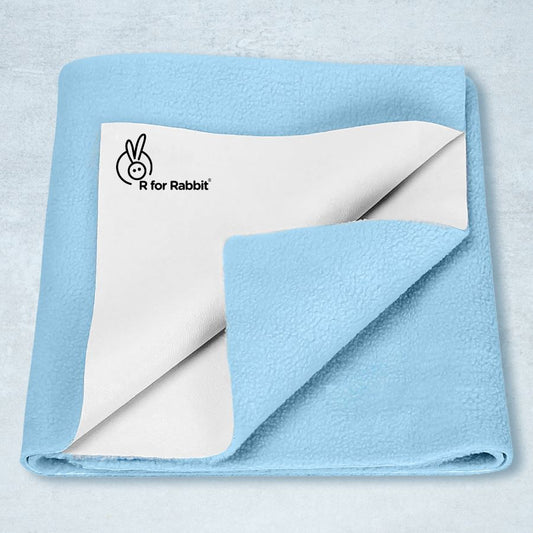How to Keep Babies Safe During Monsoon: Key Safety Tips

Monsoon is a time of calm winds, green trees, and puddles. Though it is a welcome respite from the hot summer heat, you, as a parent to a small child, are aware that it is also the season when you have to be extra vigilant. Why? Along with all that beauty, there is an unseen menu of woes: wet clothes, dirty floors, sneaky mosquitoes, and an increase in colds and stomach bugs. Sounds familiar?
This is a risky season for babies with their sensitive skin and low immune systems. From diaper rashes to coughs and unexplained fever, the monsoon can be cruel to them unless we take the proper measures.
In this blog, you will find simple yet effective monsoon baby care tips, essential monsoon safety tips for kids, and practical advice on rainy season care for babies. We will also talk about maintaining monsoon hygiene for children and offer clear answers to how to care for baby during monsoon season, all broken down step-by-step so you do not miss a thing.
1. Keep Kids Dry with Weather-Appropriate Clothing
As soon as the cloud’s part and humidity increases, it is crucial to upgrade your baby's wardrobe. Not dressing a child according to the season is one of the worst things that a parent can do.
-
Use Quick-Dry Cotton and Raincoats
Make babies wear moisture-wicking and breathable material, such as quick-dry cotton, that will keep their skin dry. Plastic clothes are not good because they may irritate their tender skin. When seeking to travel outdoors, buy light rain gear jackets or rather raincoats inscribed in baby size, accompanied by their hoods.
-
Change Clothes Immediately After Getting Wet
Dry clothes as soon as something has wet them down: a drizzle is enough to make your infant wet, and when ignored, that water may produce sniffing and even fungus.
2. Maintain Proper Hygiene and Cleanliness
Beautiful as it may seem, monsoons also come along with mud, germs, and bacteria. Keeping your little one in touch with monsoon hygiene turns out to be the first defence mechanism.
-
Frequent Hand and Foot Washing
It should become a habit to wash the hands and feet of your children with light antibacterial soap before and after meals, after playtime, and whenever they go out and come back in.
-
Use Antibacterial Wipes and Sanitisers When Needed
When you are travelling and do not have access to soap and water, use sanitisers and antibacterial wipes, which are baby safe. Select alcohol free products that are not harsh on sensitive skin.
Protect Babies from Mosquito Bites
If there is one creature that thrives during the monsoon, it is the mosquito. With stagnant water everywhere, from plant pots to open drains, the mosquito population surges, bringing threats like dengue, malaria, and chikungunya.
-
Use Nets, Repellents and Cover Arms & Legs
Make mosquito nets your best friend. Install them over cribs and strollers. Apply baby-safe mosquito repellents on exposed skin, preferably natural-based creams or patches containing citronella or eucalyptus.
-
Avoid Stagnant Water Near Home
Do not let rain water accumulate anywhere, on rooftops, balcony corners, flowerpots, or AC trays. These spots are mosquito breeding zones. Make a daily habit of checking these areas. Use herbal sprays or camphor to repel mosquitoes indoors.
3. Diapering Tips to Prevent Rashes
Humidity and constant wetness are a nasty combination when it comes to diapers. If you are not careful, you will be dealing with itchy, painful rashes that make your baby cranky and uncomfortable.
-
Change Diapers Frequently in Humid Weather
Humidity accelerates sweating and increases urine output in babies. That means more frequent diaper changes are necessary to keep their skin dry. Do not wait for diapers to be full; change them every 2 to 3 hours.
-
Use Rash Cream and Allow Diaper-Free Time
Apply a thin layer of rash-preventing cream with zinc oxide after every change, especially during the night. It creates a protective barrier against moisture. At least once a day, let your baby go diaper-free for a while. Air circulation is the best way to heal and prevent rashes.
4. Keep Feeding Items and Water Sterile
Feeding during the monsoon requires even more care than usual. Contaminated water and unclean feeding utensils are among the top causes of diarrhoea and stomach infections in infants.
-
Use Boiled Water and Sterilised Bottles
Always use boiled and clean drinking water for infants. Even if you have a water purifier, boiling adds an extra layer of safety. Feeding bottles, nipples, and utensils should be sterilised after every use. You can use a steam steriliser or simply boil them in water for 10 minutes.
-
Avoid Raw or Uncovered Food During Travel
If you are out with your baby, skip street food or anything uncovered. Carry baby food in clean and airtight containers. Use a thermal flask for storing hot water for mixing formula on the go.
5. Create a Safe and Dry Indoor Environment
The monsoon does not just bring downpours; it also brings damp walls, contaminated smells, and increased allergens. For babies who spend most of their time indoors, this can cause respiratory problems and skin issues if their environment is not kept dry and clean.
-
Ventilate Rooms and Use Anti-Mould Solutions
It is tempting to keep windows closed to block rain and humidity, but fresh air is essential. Open windows for short bursts when rain stops, and use exhaust fans in bathrooms as well as kitchens. To fight mould, use anti-fungal sprays in corners, closets, and on damp walls.
-
Keep Bedding and Baby’s Toys Clean and Dry
Change bed sheets, mattress covers, and pillowcases often. Dry them completely in sunlight or under a fan before reuse. Damp fabrics can harbour fungi and bacteria, leading to skin issues. Wash soft toys weekly and keep them in sunny areas to prevent odour and mould.
6. Monitor for Early Signs of Illness
The rainy season often brings viral outbreaks and infections. Babies cannot communicate discomfort the way older kids can, so it is up to parents to be vigilant about any signs of sickness.
-
Check for Cold, Cough, Rashes, or Diarrhoea
Sneezing, blocked noses, or wheezing? These are often the first signs of a cold, especially in the monsoon season. Skin rashes or redness might point to allergies or fungal infections, particularly in sweaty areas like neck folds or underarms.
-
Seek Medical Help at Early Symptoms
Do not wait for symptoms to escalate. Early medical intervention can avert minor challenges from becoming serious illnesses. Always keep your paediatrician’s contact number handy. During monsoon, a minor symptom can turn severe fast, so it is better to be safe than sorry.
Also Read:
- How to Travel with a Baby in the Rainy Season?: What to Pack and What to Avoid
- Powerful Monsoon Illness Prevention Tips for Children
- Monsoon Diapering Tips to Prevent Leaks and Rashes in Humid Weather
- How to Keep Your Baby Dry and Comfortable During Rainy Days in Diaper?
- Nutritional Eating Tips For Kids in Monsoon Season
Use R for Rabbit Baby Products for Monsoon Comfort
Parents today are lucky to have access to brands that offer monsoon-specific baby gear, and R for Rabbit is one of the most trusted names in that space. Our innovative baby products are specially designed to meet the challenges of the rainy season.
-
Waterproof Strollers and Dry Mats
Getting out of the house? A waterproof stroller with rainy weather precautions for kids shield will keep your little one dry and comfy while you are on the move. Our strollers have breathable canopies and washable linings, ideal for monsoon travel.
-
Mosquito-Safe Baby Gear and Soft Dry Clothing
Our mosquito-safe cribs and travel cots come with built-in mesh nets to offer protection without compromising airflow. Add to that ultra-soft monsoon-friendly baby clothes made of quick-dry cotton blends, and you have got a winning combo for all-weather comfort.
Conclusion - Keep Babies Safe, Dry, and Happy!
The monsoon season is magical, but for babies, it can also bring hidden risks. That is why staying informed and prepared is your best defence. From choosing the proper clothing and baby mosquito protection to ensuring monsoon hygiene for children and checking for early signs of illness, every small step counts.
Prioritise daily cleanliness, switch to breathable clothes, and stick to a routine that includes monsoon baby care tips and safety checks.
Remember, monsoon challenges can be avoided with simple, preventive rainy season care for babies. If you are wondering how to care for a baby during monsoon season, start by keeping your baby dry, and have warm clothes for babies. Because when your baby is safe and smiling, even the rain feels like a blessing.

















